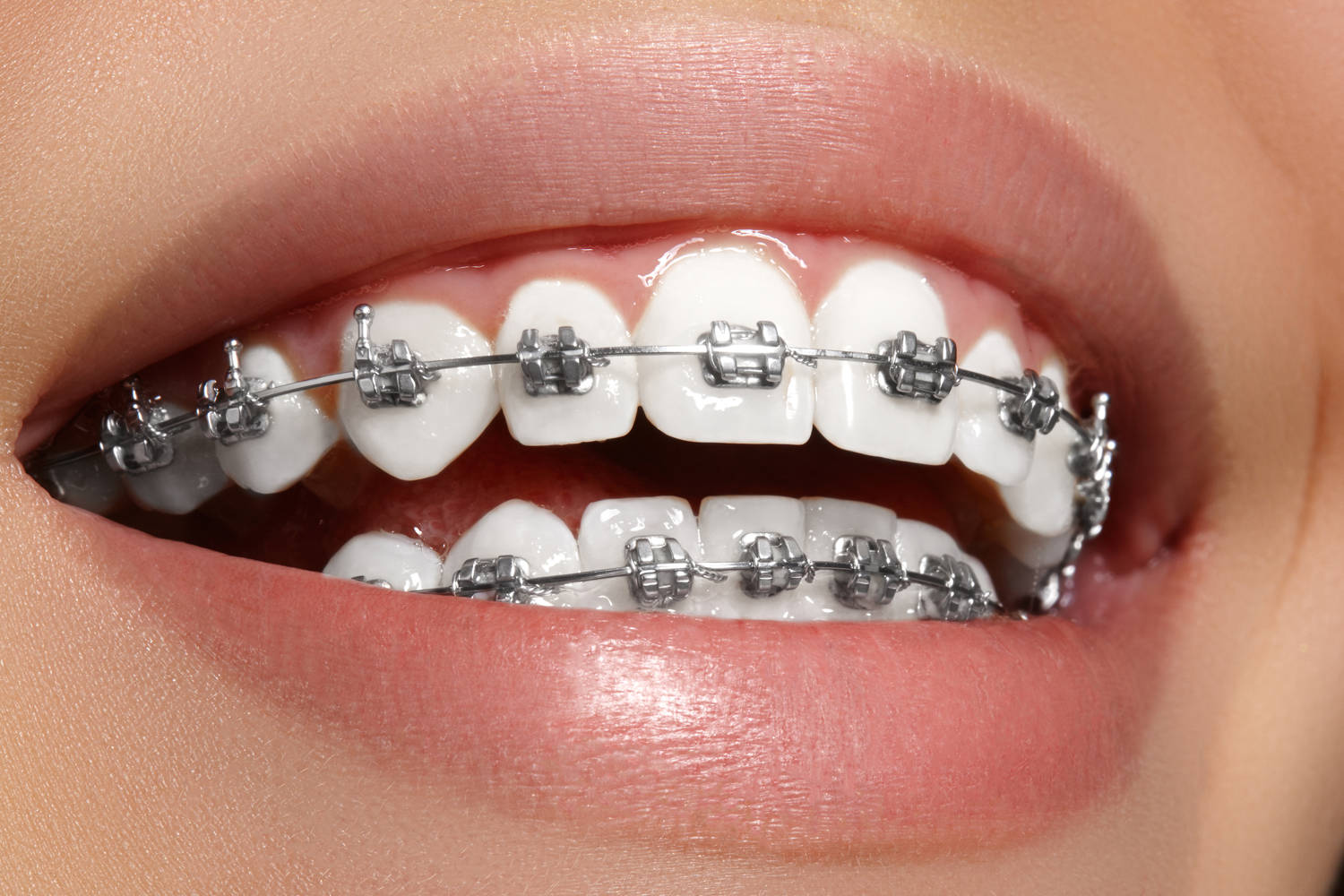
These days, braces are the most common treatment method in orthodontics. The bracket system can provide controlled movements of all teeth and move a separate tooth or group of teeth, it is glued to the surface of the tooth without traumatising the tooth itself. A bow is then inserted into the brace, which straightens its teeth when interacting with them.
Braces of metal. The classic type of brace is metallic braces. They are made from an alloy of high-value nickel, titanium and other metals and effectively regulate teeth. Typically, this type of bracket is chosen by young people, as the bow in the brace is reinforced with a special elastic rubber. The patient can choose from a variety of colour gummies each time they come to attract braces and this makes the process of regulating teeth more interesting and attractive to young people.
Aesthetic braces. It is made of ceramic or synthetic sapphire. They are white or practically transparent, and if a white arc is also used, then it makes the regulation of teeth virtually imperceptible.
Self-adhesive braces. A relatively new type of bracket, where the bow in the brace is reinforced by a special mechanism and no elastic rubber is required to strengthen the rim. This in turn gives you less friction, so you need slightly less frequent visits.
Linguistic braces. This type of bracket is virtually invisible to those around you, as the brace is fastened to the inside of the tooth from the side of the tongue.
There are two types of linguistic braces: